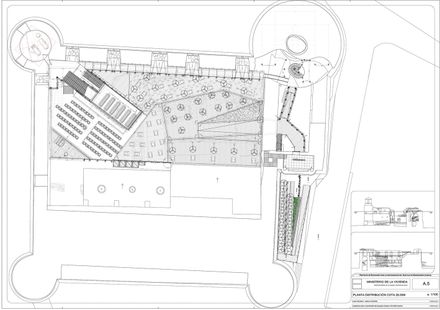
Refurbishment of Garcimuñoz Castle
SUPERVISING CO DIRECTOR MARCH 2010 TO DECEMBER 2011
Carlos jimenez cenamor
PROJECT STRUCTURAL CONSULTANCY
fhecor
PHOTOGRAPHER
Imagen Subliminal
COLLABORATORS DURING THE PROJECT
Joaquim parcerisas civit
ON SITE ARCHEOLOGIST
Joaquim parcerisas civit
COUNTRY
Spain
SUPERVISING DIRECTOR
Izaskun chinchilla
BUDGET, SAFE AND HEALTHY CONSULTANCY
Julio hernánz cabila
PROJECT SERVICE CONSULTANCY
r.úrculo ingenieros consultores
EXECUTION SUPERVISION ASSISTTANTS
D-fine
TECHNICAL SUPERVISOR
Urbano chousa
STRUCTURAL CONSULTANCY
Roberto marín sampalo
QUALITY CONTROL ON SITE
Intercontrol levante s.a
THE REFURBISHMENT OF GARCIMUÑOZ MEDIEVAL CASTLE HAS THREE MAIN PURPOSES
+ To reinforce the existing structures, coming from different periods of History, avoiding their decay.
+ To transform the existing ruins in suitable and safe spaces for public visit and to contribute to their understanding.
+ To introduce new cultural and digital uses, proposed by the author of the project, that compensate the lack of cultural equipments within the area and that ensure a self sustained activity and maintenance of the building.
Methodology: Main landmarks in the research process for this building has been:
2002: Invited by Spanish Ministry of Public Works to a restricted competition to propose future use and architectural refurbishment of the Garcimuñoz Castle ruins.
We analyzed the lack of public and cultural equipment in the area and the seasonal flows of visitors through national statistics.
2003-2005
Tight work with engineers to define a project that could be completely dismantled and reassembled elsewhere.
Increase of the number of structural elements to reduce their weight. Research on the compatibility of micropiling with archeological remains. Research on bioclimatic techniques that could be implemented in the Castle.
Research in this period was mainly base in design, calculation and analyze of existing buildings. In 2005 the execution project is presented and pre-approved.
2005-2008
ustification of legal requirements for public buildings. In 2006 the actual Technical Building Code became effective.
During two years we had to proof to implied authorities how the design was accomplishing through alternative means all legal and safety conditions. Type of work was base in calculation (evacuation times, resistance of particular architectural elements).
2008-2010
Although contract with contractor is signed up at the end 2008 factual works in the site began on March 2010.
In the meanwhile there was a tight work with the metal company FERROALUPAL producing first set of prototypes.
2010-2013
Site supervision works. Complexity of building and context demand mixed methodologies: building production, trial and error, manufacturing techniques, digital methods and plenty of prototyping.

































